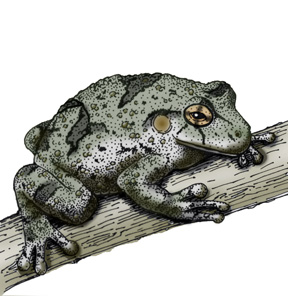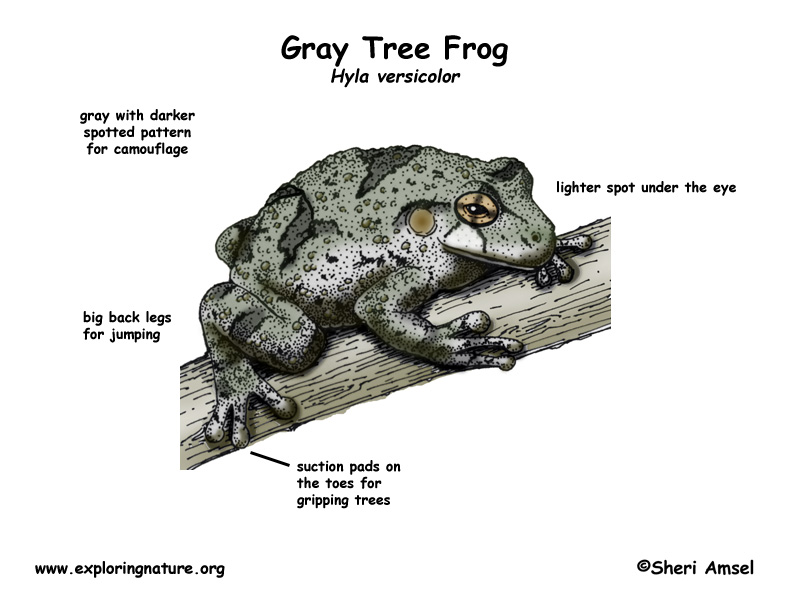

They are found in the eastern part of southern Canada and the U.S. to the Rocky Mountains in some places.
They live in wet woodlands near water and swamps.
They reach about 2 inches long. They are usually gray with darker spotted patterns. They have a light-colored spot with a dark edge under each eye. They blend in very well (camouflage) and are hard to see. They have sticky toe pads to cling to trees.
They have a trilling song. They are active at night (nocturnal). They can survive being frozen in winter.
They eat insects and tadpoles.
They are eaten as tadpoles by other pond animals and birds.
They sit in trees near the water and call for a mate. The females lay their eggs in shallow water attached to rocks or plants to keep them from floating away. The tadpoles hatch, breathing with gills and will, over time, grow into the adult frogs.
Domain: Eukarya
Kingdom: Animalia
Phylum: Chordata
Subphylum: Vertebrata
Class: Amphibia
Order: Anura
Family: Hylidae
Genus: Hyla
Species: H. versicolor
When you research information you must cite the reference. Citing for websites is different from citing from books, magazines and periodicals. The style of citing shown here is from the MLA Style Citations (Modern Language Association).
When citing a WEBSITE the general format is as follows.
Author Last Name, First Name(s). "Title: Subtitle of Part of Web Page, if appropriate." Title: Subtitle: Section of Page if appropriate. Sponsoring/Publishing Agency, If Given. Additional significant descriptive information. Date of Electronic Publication or other Date, such as Last Updated. Day Month Year of access < URL >.
Amsel, Sheri. "Frog (Gray Tree)" Exploring Nature Educational Resource ©2005-2024. December 14, 2024
< http://exploringnature.org/db/view/64 >


